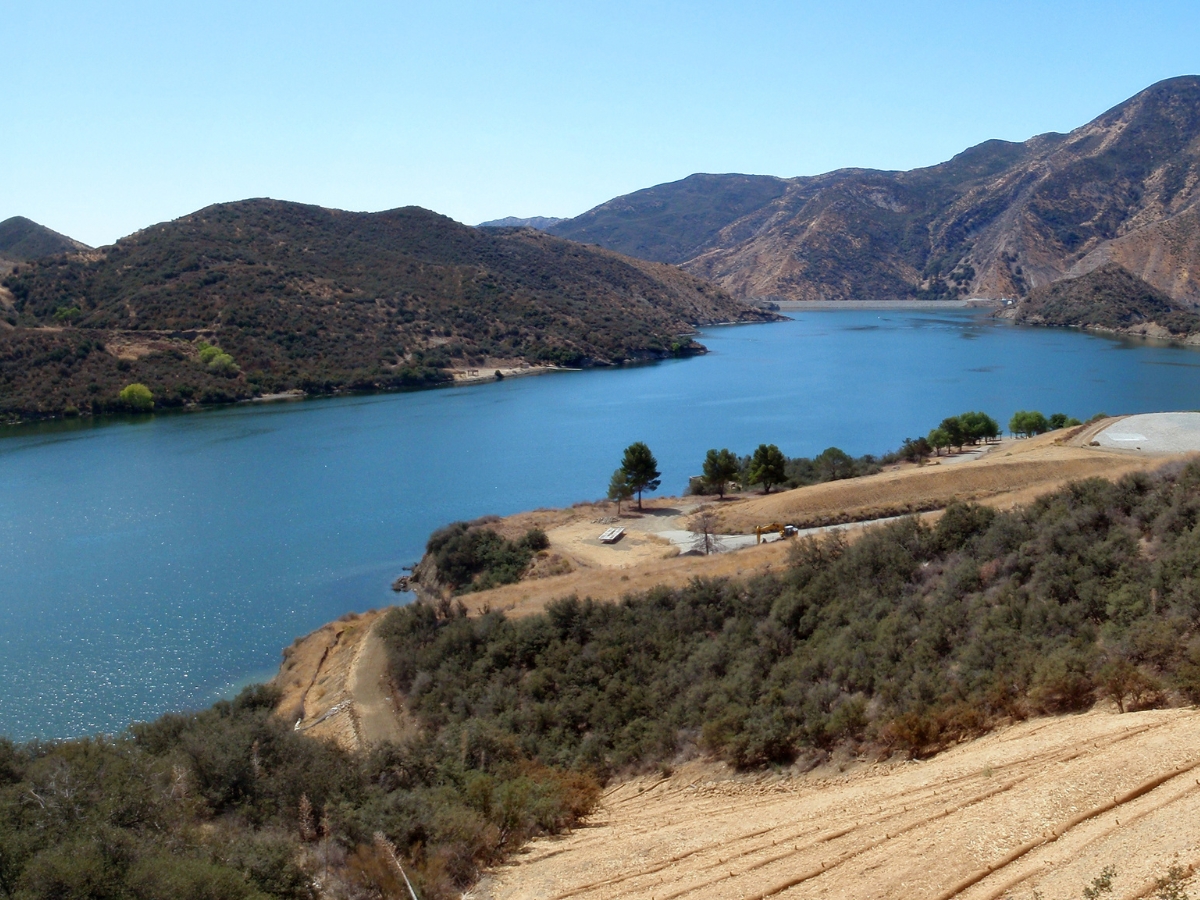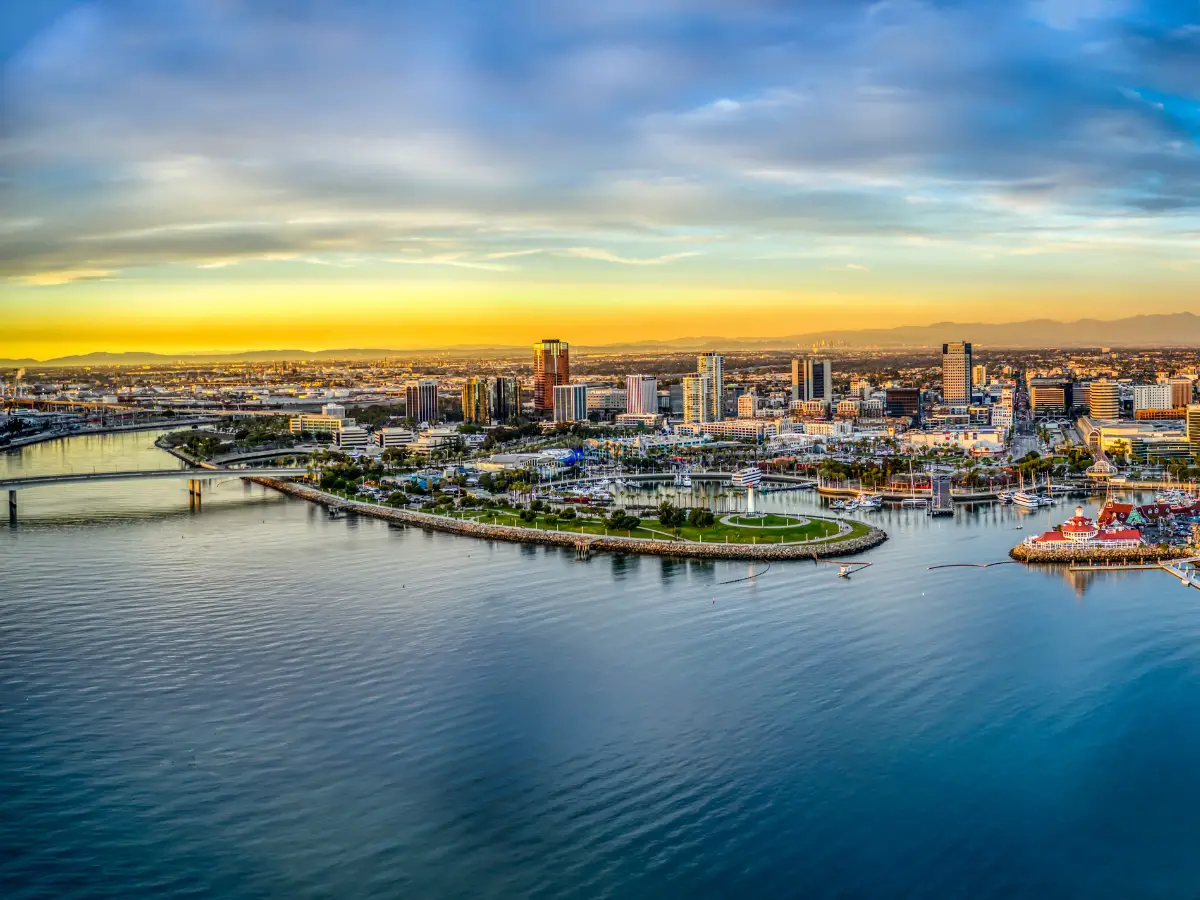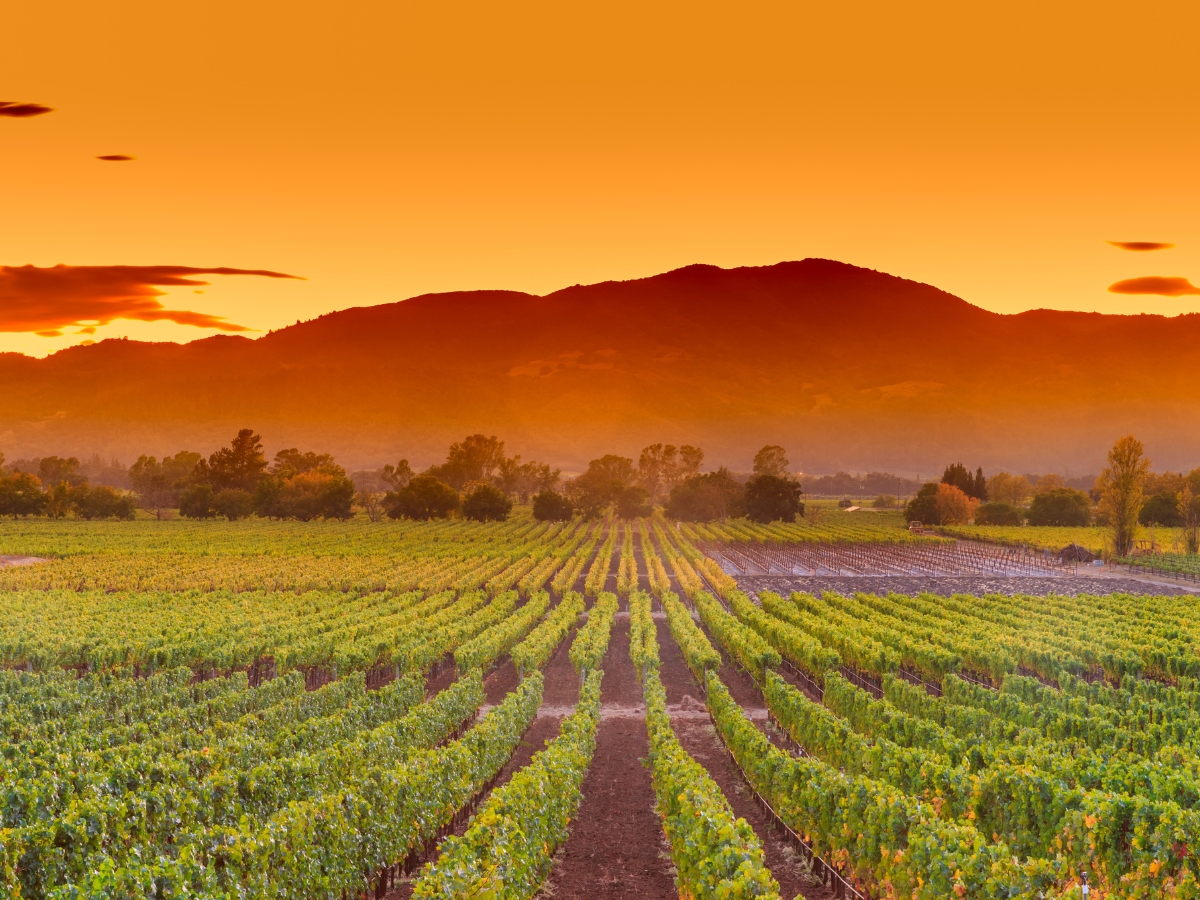California is known for its warm weather, beautiful beaches, and diverse landscapes. However, the state’s arid climate poses a significant challenge regarding water supply. While California receives 75 percent of its rain and snow in the watersheds north of Sacramento, 80 percent of the state’s water demand comes from the southern two-thirds of the state. This has led to a complex water system relying on local and imported water sources.
One question that often arises is whether California gets water from other states. The answer is yes; California does receive water from other states, but the amount varies depending on the year. The Colorado River, which runs through seven states, including California, is a vital water source for the state.
California is entitled to 4.4 million acre-feet of water annually from the river, which is used to irrigate crops in the state’s southeastern corner and as a water source for urban southern California. However, due to drought conditions, California has had to reduce its usage of Colorado River water in recent years.

Understanding California’s Water Sources
California’s water supply comes from a variety of sources, including surface water, groundwater, and imported water. The state’s limited water supply is a critical issue, and understanding the sources of California’s water is essential for managing this precious resource.
Surface Water
Surface water is water that travels or gathers on the ground, like rivers, streams, and lakes. California’s surface water supply comes from both natural and man-made sources, including reservoirs, snow, and dams. The state has an extensive system of aqueducts, canals, and pipelines that transport surface water from the source to where it is needed.
One of the most significant sources of surface water in California is the Sacramento-San Joaquin Delta. The Delta provides water to more than 25 million Californians and is a critical hub for the state’s water supply system. The Bureau of Reclamation operates several pumping plants in the Delta that move water to the Central Valley and Southern California.
Groundwater
Groundwater is water that is pumped out from the ground. It is an essential source of water for many communities in California, especially during droughts when surface water supplies are limited. About 30 percent of California’s total annual water supply comes from groundwater in normal years, and up to 60 percent in drought years.
The state’s groundwater supply is managed by local agencies, and regulations vary by region. The Sustainable Groundwater Management Act (SGMA) was passed in 2014 to improve the management of California’s groundwater resources.
Imported Water
California also imports water from other states and regions, including the Colorado River, the All-American Canal, and the Los Angeles Aqueduct. The Colorado River is the most significant imported water source for California, providing water to millions of people in Southern California.
The state’s water supply system includes several large storage reservoirs, including Lake Mead and Lake Powell, which store Colorado River water. The Colorado River Aqueduct transports water from Lake Havasu to Southern California, and the All-American Canal delivers water from the Colorado River to the Imperial Valley.
Conclusion
California’s water supply is a complex system that relies on multiple sources, including surface water, groundwater, and imported water. Managing this precious resource is a critical issue for the state, and understanding the sources of California’s water is essential for ensuring a reliable water supply for future generations.

Interstate Agreements and Legalities
California has a complex system of water allocation and management due to competing demands and limited resources. As such, the state has entered into several interstate agreements and legalities to ensure a stable water supply.
One such agreement is the Colorado River Compact, which allocates water from the Colorado River to seven states, including California, Arizona, and Nevada. The compact governs the flow, allocation, and management of water from the Colorado River Basin, which is a crucial source of water for California.
Another interstate agreement that California is a part of is the Klamath River Compact, which governs the allocation and management of water from the Klamath River Basin. The compact is between California and Oregon and is overseen by the Klamath River Compact Commission.
In addition to interstate agreements, California also has several legalities in place to ensure water rights are protected. For example, California has a system of water rights that is based on the principle of “first in time, first in right.” This means that those who first put water to beneficial use have a priority right to the water over those who come later.
California also has laws in place to regulate groundwater use and protect the state’s aquifers. The Sustainable Groundwater Management Act (SGMA) requires local agencies to develop and implement plans to manage their groundwater resources sustainably.
Litigation over water allocations is not uncommon in California, and the state has a complex legal system in place to resolve disputes. The state has a water rights adjudication process that allows for the determination of water rights in a court of law.
Overall, California’s water management system is complex and involves several interstate agreements, legalities, and regulations. The state is committed to ensuring a stable water supply for its residents while also protecting its natural resources.
The Role of California’s Water Projects
California’s water supply comes from a variety of sources, including surface water, groundwater, and imported water. The state’s water projects play a crucial role in managing and distributing this water to meet the needs of California’s residents, businesses, and agriculture.
The Central Valley Project (CVP) and the California State Water Project (SWP) are two of the largest water projects in the state. The CVP, built by the U.S. Bureau of Reclamation in the 1930s, transports water from Lake Shasta in the north to Bakersfield in the southern San Joaquin Valley. It provides irrigation water to more than 3 million acres of farmland and serves as a source of drinking water for millions of people.
The SWP, managed by the California Department of Water Resources (DWR), is a state water management project that provides drinking water for more than 27 million people and generates hydroelectricity for the state’s power grid. It is one of the largest public water and power utilities in the world. The SWP consists of 29 reservoirs, 18 pumping plants, and 5 hydroelectric power plants.
The Metropolitan Water District of Southern California (MWD) plays a critical role in delivering water to Southern California. The MWD imports water from the SWP and the Colorado River and distributes it to 26 member agencies that serve nearly 19 million people in six counties.
Water use planning is an essential component of California’s water management strategy. The DWR is responsible for developing and updating the California Water Plan, which provides a comprehensive framework for managing the state’s water resources. The plan includes strategies for improving water supply reliability, protecting the environment, and promoting water conservation.
In conclusion, California’s water projects play a vital role in managing and distributing the state’s water supply. They provide irrigation water for agriculture, drinking water for millions of people, and hydroelectricity for the state’s power grid. Effective water use planning is essential for ensuring that California’s water resources are used wisely and sustainably.
Impact of Climate and Environmental Changes
California has always been prone to droughts, but with the changing climate, the state is facing more frequent and severe droughts. The prolonged droughts have led to a decrease in the state’s water supply, and California has been forced to find alternative sources to meet its water demands. The state’s water supply is dependent on various sources, including surface water, groundwater, and imported water from other states.
The San Francisco Bay Area and San Joaquin Valley are the two main regions that rely heavily on imported water. The water is transported from the Colorado River and the Sacramento-San Joaquin Delta through a complex system of canals and pipelines. However, the overuse of water resources in the western states has led to a decrease in the amount of water available for California.
The 2015 California drought was one of the worst droughts the state has ever faced. The drought lasted for five years, and it had a severe impact on the state’s water supply. The Oroville Dam, which is one of the state’s largest dams, was at risk of collapsing due to the low water levels in the reservoir. The state had to implement strict water conservation measures to conserve the remaining water resources.
The impact of the droughts is not limited to the state’s water supply. The high temperatures and low humidity levels have led to increased evaporation rates, which further exacerbate the water shortage problem. The droughts have also had a severe impact on the state’s agriculture industry, which is one of the largest in the country.
In recent years, California has been taking steps to address the impact of climate change on its water resources. The state has been investing in water conservation measures and increasing its use of recycled water. The state has also been exploring the use of desalination as a way to increase its water supply.
In conclusion, the impact of climate and environmental changes on California’s water resources cannot be overstated. The state’s water supply is dependent on various sources, and the overuse of water resources in the western states has led to a decrease in the amount of water available for California. The state’s water conservation measures and investments in alternative sources of water are crucial to ensure that California can meet its water demands in the future.
Water Usage and Demand in California
California is the most populous state in the United States and has a diverse economy that includes agriculture, industry, and tourism. The state’s water resources are limited, and the demand for water often exceeds the available supply. The state has a complex water management system that includes federal, state, and local agencies, as well as private entities.
Water use in California is divided into three main sectors: urban, agricultural, and environmental. On average, communities use 10% of the state’s water, agriculture uses 40%, and the environment uses 50%. The majority of the demand for water comes from the southern two-thirds of the state, where the population is concentrated.
The state’s water resources come from a variety of sources, including surface water, groundwater, and imported water. Surface water comes from rivers, lakes, and reservoirs, while groundwater is stored in underground aquifers. The state also imports water from other states, such as Colorado, New Mexico, Utah, and Wyoming.
The Sierra Nevada mountain range is a critical source of water for the state. Snowmelt from the mountains feeds rivers and reservoirs that supply water to much of the state. However, climate change is affecting the snowpack, and the state is facing a deadline to reduce its reliance on imported water.
Farmers in California are among the largest users of water in the state. They rely heavily on irrigation to grow crops, and many farmers have been criticized for using unsustainable water practices. The state has implemented new regulations to promote sustainable groundwater management and reduce the impact of agriculture on the state’s water resources.
The state also faces challenges related to water infrastructure, such as levees, which are critical for flood control. The north coast and central coast regions of the state are particularly vulnerable to flooding, and the state has invested in levee upgrades and other measures to protect these areas.
Overall, California’s water management system is complex and expensive, and the state is facing increasing pressure to find sustainable solutions to its water challenges. Water allocations, cost, and sustainability are all critical issues that must be addressed to ensure that the state’s water resources are managed effectively and efficiently.
Future Plans and Sustainability Measures
As California continues to face challenges with its water supply, a number of future plans and sustainability measures are being considered and implemented to ensure a reliable water supply for the state’s growing population and diverse economy.
One key aspect of these plans is increasing water storage capacity. The California Water Plan, updated every five years, outlines the state’s strategic plan for sustainably and equitably managing and developing water resources for current and future generations. This includes exploring opportunities for additional storage, such as underground storage, to help capture and store water during wet years for use during dry years.
Another important aspect of future plans is improving water conservation and efficiency measures. Governor Gavin Newsom’s recently released California Water Supply Strategy outlines actions needed now to invest in new sources, transform water management, and promote conservation and efficiency. This includes promoting the use of technology to reduce water loss and increase efficiency in agriculture and urban water use.
In addition to these measures, there are also ongoing efforts to improve the state’s water infrastructure. This includes upgrading aging infrastructure, such as levees and pumping plants, to improve flood control and water delivery. It also includes exploring the potential for new water projects, such as desalination plants and recycled water programs.
However, these plans and measures face challenges and limitations. For example, some proposed projects, such as the proposed Sites Reservoir, face legal and environmental hurdles. Additionally, some conservation measures, such as reducing water use in agriculture, can be costly and face resistance from farmers and other stakeholders.
Overall, the state of California is taking a comprehensive and adaptive approach to securing its water supply in the face of climate change and growing demand. By exploring a range of solutions, from storage and conservation to infrastructure upgrades and new projects, the state is working to ensure a sustainable and reliable water supply for all Californians.
Frequently Asked Questions
What are the main sources of water for California?
The main sources of water for California are surface water and groundwater. Surface water comes from rivers, lakes, and reservoirs, while groundwater comes from underground aquifers.
Does California rely on water from Lake Mead?
Yes, California does rely on water from Lake Mead. Lake Mead is one of the primary sources of water for Southern California. However, due to the ongoing drought, the water levels in Lake Mead have been declining, which has led to concerns about water shortages in the region.
Where does Southern California obtain its water?
Southern California obtains its water from a variety of sources, including the Colorado River, the Sacramento-San Joaquin Delta, and local groundwater aquifers. The Metropolitan Water District of Southern California is responsible for managing and distributing water to the region.
How much water does California consume annually?
California consumes approximately 38 billion gallons of water per day, or about 14 trillion gallons per year. However, due to the ongoing drought and increasing demand for water, there are concerns about the sustainability of California’s water supply.
What is the primary water source for Northern California?
The primary water source for Northern California is the Sacramento-San Joaquin Delta. The Delta is a critical source of water for both Northern and Southern California, providing water for agricultural, urban, and environmental uses.
Which state provides water to California?
California receives water from a variety of sources, including the Colorado River, which flows through several states before reaching California. Additionally, California receives water from the Sacramento-San Joaquin Delta, which is fed by rivers that originate in Oregon and Nevada.





